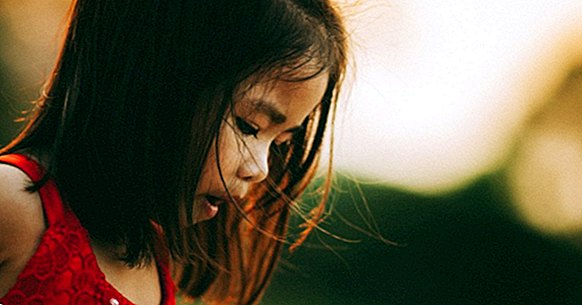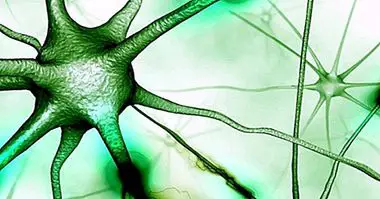Mindfulness for children: application in educational centers
In recent decades the boom in the use of Mindfulness techniques has proven its effectiveness in the context of clinical psychology , obtaining favorable results in the intervention of psychopathologies such as depression, anxiety or chronic pain.
In the child population, there have been increases in the level of stress experienced in the school setting (Currie et al., 2002, Lohausy Ball, 2006, Card and Hodges, 2008) and prevalence rates of certain serious psychopathologies located around the 20% in the US (Merikangas et al., 2010).
So much so that not only has Mindfulness continued to be used for children with this purpose, but it has also been extended to preventive purposes by employing children as enhancer of academic performance and emotional well-being . The results of recent research reveal the correlation between an increase in attention and concentration capacity and the usual practice of Mindfulness techniques.
Derived from all this, it is essential to determine the degree to which these scientific findings are being assumed (and to what extent) in the national and international educational context and, consequently, how they are implemented in school institutions in different countries. .
The Mindfulness for children and educational centers
In Almansa et al (2014) it is pointed out that the increase in attentional deficits in the school population during the last decades is very significant.
According to the data of the FEDAH, the ADHD affects between 2 and 5% of the child population, 50% of the clinical population in this vital area . For this reason, observations made by educators or relatives about the increase in the state of nervousness, distraction and deconcentration in children are very common nowadays.
The practice of Mindfulness for children in the educational field can be very useful in improving this difficulty, so it is very important to analyze the results of the research that has been devoted to studying the relationship between both phenomena. In previous investigations it has been observed how Mindfulness brings benefits at a psychological level in the individual in relation to the changes in mental activity experienced after the assiduous practice of mindfulness.
To date, there seems to be a general consensus about the successful effects that Mindfulness employment is getting into the educational field . More specifically, the benefits point to an improvement in academic performance, in self-concept and in interpersonal relationships, together with a reduction in aggression and violence.
The three areas where the most satisfactory results have been found correspond to the improvement of physical and psychological health, the enhancement of attention capacity and the promotion of a sense of personal well-being in general.
Application of Mindfulness programs in education
An interesting exhibition is what Mañas et al. (2014) on a selection of Mindfulness programs with a significant level of scientific rigor that supports them, which already have an important trajectory at a practical level in the educational field, both nationally and internationally. They are the following:
At the national level
In the Spanish context, these are The main Mindfulness programs for boys and girls in the school environment .
1. TREVA Program Experimental Relaxation Techniques Applied to the Classroom (López González 2009)
It consists of twelve content units, one of which is Mindfulness. The results show how the application of the program correlates positively with the relaxing competence of the students, the climate of the classroom, the emotional competence and the academic performance .
2. Happy Classrooms Program (Arguis, Bolsas, Hernández and Salvador 2010)
Focuses on positive psychology content for students of early childhood, primary and secondary education . Full conscious attention is worked on to enhance the conscious capacity, calmness, decrease of automatisms and enhancement of emotional development.
3. Educate with Co-Razón (Toro 2005)
It is a set of procedures that, despite not directly employing Mindfulness techniques, the philosophy on which it is based derives from this phenomenon (breathing or body awareness).
4. PINEP - Plena Emotional Intelligence Training Program (Ramos, Recondos and Enríquez 2008)
A program that has proven the effectiveness of Mindfulness as a tool to improve life satisfaction and the emotional reality, empathy, attention and decrease of intrusive thoughts in preadolescents.
In the international field
Beyond Spain, the following programs stand out.
1. INNER KIDS PROGRAM (USA, 2002)
For primary school children It is called The New ABCs (Attention, Balance and Compassion). The objectives that are proposed are oriented to promote the awareness of the internal experience (thoughts, emotions and physical sensations), the external experience (people, places and things) and the awareness of experiences together, although without mixing them.
The program consists of 2 weekly sessions of 30 minutes and it lasts for 8 weeks. Seniors perform the program for 12 weeks and with 45-minute sessions. Among the methodological particularities the game is mainly used, and other activities and practical-ludic lessons.
Susan Kaiser, author of the book The Mindful Kids and co-founder of the Inner Kids Foundation published in 2010 an article called A mindful revolution in education where he mentions a series of aspects related to the application of Mindfulness in the classroom.
According to Kaiser, there are requirements to be met, namely: to deal clearly with internal and external experiences; to tolerate the emotional discomfort that it generates and to observe the bosom of one's own crises, to be able to respond compassionately and kindly to ourselves and others, mainly. This author proposes seven principles to take into account when putting into practice in Mindfulness in the classroom : motivation, perspective, simplicity, game-fun, integration, collaboration, strategy.
2. INNER RESILIENCE PROGRAM (US 2004)
Intended for primary school students and teachers, parents and administrators. This program focuses on the learning of social and emotional learning through contemplative practices. Includes retreats, personal development workshops, stress reduction sessions and workshops for parents .
In it, emphasis is placed on the issue of neuroplasticity, that is, the changes produced at the level of circuitry and brain anatomy from the training in attentional skills, emotional calm, conscience, insight and care of others.
3. LEARNING TO BREATHE (US 2007)
Its main purpose is prevention in adolescents where contents of social and emotional learning through the program Mindfulness-Based Stress Reduction ( MBSR) in adolescents. It also includes components of Acceptance and Commitment Therapy, Mindfulness Based Cognitive Therapy (MBCT) and Dialectic Behavioral Therapy.
Its more specific objectives are directed to: instruct in Mindfulness and provide general well-being; improve emotional self-regulation; enhance attention; acquire stress management skills; and integrate Mindfulness into daily life.
The program lasts 6 sessions between 30 and 45 min . The contents that make up the program consist of the work of: body awareness, the understanding of thoughts, the understanding of emotions, the integration of thoughts, emotions and bodily sensations, the reduction of judgments and the integration of mindful consciousness in the daily life.
4. MINDFULNESS IN SCHOOL PROJECTS (MiSP) (England 2008)
Focusedn the adolescent population between 14 and 18 years old . This initiative is based on the MBSR-C and MBCT models and includes as main components: Mindfulness of breathing, Mindflness of the body (BodyScan), practice of conscious eating, mindful body movements, movements of thoughts and sounds and mindful texting.
It has a duration of 9 weeks and has recently been manualized to intervene with children with highly anxious functioning (Semple and Lee 2011). In this program explicit indications and orientations are given to the parents so that they get involved in the development of the program. The parents were involved in the treatment.
The MBSR-T is an adaptation of MBSR for adolescents, in which aspects such as the frequency and duration of sessions and some concrete contents have been modified to increase their effectiveness, considering the specificity of the adolescence stage in terms of interpersonal challenges and of performance. (Biegel et al 2009, Biegel 2009).
5. MINDFUL SCHOOLS (USA 2007)
It is intended for primary and secondary school students and is applied in California structurally in 41 school s, mostly with scarce resources. It consists of 15 sessions for 8 weeks and consists of the elements: mindfulness of sounds, breathing, body, emotions, generosity, appreciation, kindness and care. Content is also allocated to parents (face-to-face sessions and materials manual).
6. MINDUP (USA 2003)
Its objective is the group of elementary students and it is integrated into the school curriculum. It consists of 15 lessons in which we work: social and emotional awareness, the improvement of general welfare, the promotion of school academic success.
As a particularity, is focused on the practice of conscious breathing , so it requires the realization of exercises dedicated to this area 3 times a day.
7. STAF HAKESHEV "The Mindulness Language" (Israel 1993)
This pioneering initiative It was thought for students between 6 and 13 years old, parents and teachers . The objectives of the intervention are focused on the work of body awareness and body-mind practices to achieve: the development of cognitive and emotional skills, the enhancement of attention and awareness of the experience, and acquisition as a habit of a restful rest to optimize cognitive learning.
The specific contents consist of activities related to breathing, knowledge of the physical limits of the body, bodily sensations, postures and movements of sounds, emotions and visualization processes.
8. STILL QUIET PLACE (USA 2001)
It is intended for primary, secondary, teachers and parents. This program is focused on Mindfulness awareness development for Learn to respond consciously (instead of reacting), promote peace and happiness .
It involves breathing, body movement, thoughts, emotions, loving kindness, walking, yoga exercises, mindful practice in daily life and strategies to acquire the ability to respond consciously. It lasts 8 weeks, which are structured weekly with a duration between 45 and 90 minutes.
9. STRESSED TEENS (US 2004)
It has been proposed for teenagers between 13 and 18 years old. Consists in an adaptation of the MBSR adapted to the adolescent population MBSR for Teens . Its main elements are related to body meditation, walking meditation, sitting meditation, sitting meditation with heartfulness, yoga, mindful stopping and mindful to work at home. It covers 8 weeks of practice and is practiced for 1.5 or 2 h per week.
10. WELLNESS WORKS IN SCHOOLS (USA 2004)
It is done with teenagers between 13 and 18 years old. Objectives: stress management, mental health, emotional balance, behavior, willingness to learn. It is a program of between 8-15 sessions, 45-50 minutes each . The exploration of emotions, intentions, objectives, resilience, problem solving skills is worked.
11. BREATHE - CONSCIOUSNESS FOR WELFARE IN SCHOOL (Colombia)
Its central purposes are linked to enhancing the socio-emotional learning and the educational and student welfare and to acquire an improvement of peaceful coexistence for young people and children victims of armed violence. It is a multicomponent program that focuses on working with teachers so that they can subsequently transmit it in the classroom. It also intervenes in families in the community.
The RESPIRA program is in the pilot phase and evaluation in Bogotá and Tumaco, so there is little information yet on scientifically validated final results.
Bibliographic references:
- Gallego, J., Aguilar, J. M., Cangas, A. J., Langer, A. and Mañas, I. (2014). Effect of a mindfulness program on stress, anxiety and depression in university students. The Spanish Journal of Psychology, 17, 1-6.
- J. Davidson, Richard; Dunne, John; Eccles, Jacquelynne S .; Engle, Adam; Greenberg, Mark; Jennings, Patricia; Jha, Amishi; Jinpa, Thupten; Lantieri, Linda; Meyer, David; Roeser, Robert W .; Vago, David (2012). "Contemplative Practices and Mental Training: Prospects for American Education." Child Development Perspectives (2): 146-153.
- Mañas, I., Franco, C., Gil, M. D. and Gil, C. (2014). Conscious education: Mindfulness in the educational field. Conscious educators forming conscious human beings. In Alliance of Civilizations, Migratory Policies and Education (197-233). Seville: Aconcagua Books.
- Mañas, I., Franco, C., Cangas, A. J. and Gallego, J. (2011). Increase in academic performance, improvement of self-concept and reduction of anxiety in high school students through a training program in mindfulness. Encounters in Psychology, 28, 44-62.
- Zenner, C., Herrnleben-Kurz S. and Walach, H. (2014). Mindfulness-based interventions in schools-a systematic review and meta-analys. Institute for Transcultural Health Studies, European University Viadrina, Frankfurt Oder (Germany). June 2014 | Volume 5 | Article 603, Frontiers in Psychology.
- Zoogman, Goldberg S., Hoyt, W. T. & Miller, L. (2014) Mindfulness Interventions with Youth: A Meta-Analysis. Mindfulness, Springer Science (New York).



















